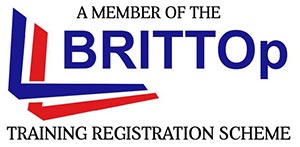FAQs
I have never had any formal training to drive a lift truck. What are the legal requirements?
Your employer has a general duty under section 2 of the Health and Safety at Work etc Act 1974 to provide information, instruction, training and supervision to ensure the health and safety of their employees. Under the Provision and Use of Work Equipment Regulations 1998 employers are required to 'ensure that all persons who use work equipment have received adequate training for purposes of health and safety, including training in the methods which may be adopted when using the work equipment, any risks which such use may entail and precautions to be taken'. The Management of Health and Safety at Work Regulations 1999 also place duties on employers to provide training. By not providing you with any training at all, your employer could be breaking the law. Rider-operated lift trucks includes the requirements for basic lift-truck training.
I have moved jobs and lost my lift truck training certificate. Can I get a copy from HSE?
There is no state system for training of lift truck operators as there is for drivers on the public highway. There is therefore no central organisation which holds copies of training certificates. To obtain a duplicate of your certificate of basic training you will need to contact the training provider who trained you and issued the original, or your previous employer, or the body which accredited the training. If you cannot obtain a duplicate then your new employer may wish to have you assessed and re-tested.
What is the minimum age at which people can operate lift trucks?
Lift truck operators should be over the minimum school leaving age (MSLA), except in ports where they must be at least 18 years old.
There are particular definitions of people by age in health and safety law:
- a young person is anyone under eighteen years of age;
- a child is anyone who is not over compulsory school age (ie he or she has not yet reached the official age at which they may leave school). This is generally referred to as the minimum school leaving age.
The Management Regulations 1999 require you to assess the health and safety risks to all your employees and to identify what you need to do to comply with your legal duties to prevent or control those risks and ensure your employees' health and safety. Under the Regulations you have particular responsibilities towards young people:
- to assess risks to all young people under 18 years of age, before they start work;
- to ensure your risk assessment takes into account their psychological or physical immaturity, inexperience, and lack of awareness of existing or potential risks;
- to introduce control measures to eliminate or minimise the risks, so far as is reasonably practicable.
Children below the MSLA must not be employed in industrial undertakings such as factories, construction sites etc except when on approved work experience schemes.
For more information, visit: Young people at work ![]()
Do drivers of lift trucks have to undertake a medical, and if so, when?
At present HSE is not prescriptive on medicals for fitness to drive lift trucks and there is no legislation relating directly to this topic.
We have adopted the standards published by the Drivers' Medical Unit at the Driver and Vehicle Licensing Agency (DVLA) and these can be found at DVLA - At a glance guide to the current medical standards of fitness to drive ![]()
These standards should be applied and adapted in line with any risk assessment carried out by the employer/dutyholder. Each person's fitness for operating a lift truck should be judged individually, with an underlying emphasis on matching the requirements of a particular task with the fitness and abilities of the driver.
For most work a standard equivalent to that for the Group 1 entitlement (DVLA medical standards) would be appropriate.
More stringent activities, such as working in a particularly demanding environment, working at night, moving highly toxic or explosive materials etc, would probably be more appropriate to the Group 2 entitlement.
Applying the principle of individual assessment of fitness should ensure that people with disabilities are not disadvantaged but competence in an emergency must always be considered.
It is over three years since I did my basic lift truck training. My employer has refused to send me on refresher training. Is he obliged to provide additional training?
There is no specific requirement to provide refresher training after set intervals, but even trained and experienced lift-truck operators need to be re-assessed from time to time to ensure they continue to operate lift trucks safely. In addition to routine safety monitoring, re-assessment might be appropriate where operators have not used trucks for some time, are occasional users, appear to have developed unsafe working practices, have had an accident or near miss, or there is a change in their working practices or environment.
What is HSE's position on wearing seat belts while driving lift trucks?
Since 2002, counterbalanced trucks, rough-terrain trucks and side-loading trucks, one side only, must be fitted with an operator restraining system (for example a seat belt). For older trucks which do not have one, you should fit a restraining system if the risk assessment indicates that there is a risk of the vehicle overturning and where the operator may be trapped between the truck and the ground. Where restraining systems are fitted they should be used.
Where a restraining system cannot be fitted, and the risks are sufficiently high, it will be necessary to use another lift truck which has such a system. Any lift truck fitted with a roll-over protective structure (ROPS) to protect operators from the risk of injury resulting from 180° or more roll-over should be fitted with a restraining system.


